Strawberry variety Gigantella (Maxim)
Gigantella (aka Gigantella Maxim or simply Maxim) is a mid-late variety of Dutch garden strawberry selection. Has gained wide popularity due to the large size of berries, high yield and excellent taste. The variety is quite demanding in care, but with increased attention to itself, it is capable of showing record results.
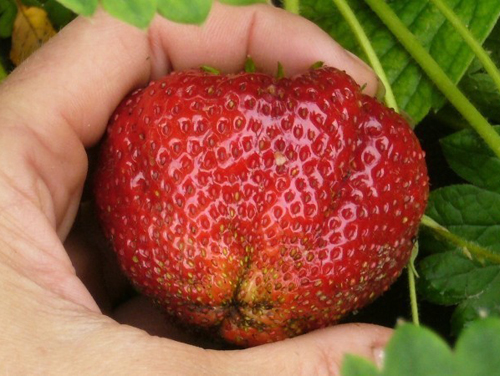
From the name, one can assume that strawberries have gigantic sizes, and often this is true! By the way, it is worth noting something right away. The original name of the variety is Gigantella Maxim, so people called him Maxim, which is not entirely correct. The name rather translates as "Gigantella Maximum", so the male name has absolutely nothing to do with it. However, it should also be mentioned that some sources claim that Gigantella is a separate species with many “offspring”, among which is Gigantella Maxim, the most famous of all. In a word, information on this matter is often very contradictory, however, after analyzing the proposals of nurseries and seed sellers, we can conclude that the same Gigantella in Russia is a variety of Gigantella Maxim, and if you are offered to buy some special Maxim variety, you should seriously think about whether you will get what you wanted. By the way, in the foreign market you can find offers of strawberry seedlings specifically under the name Maxim, but in Russia the situation is a little different, so let's move on to the description of our hero.
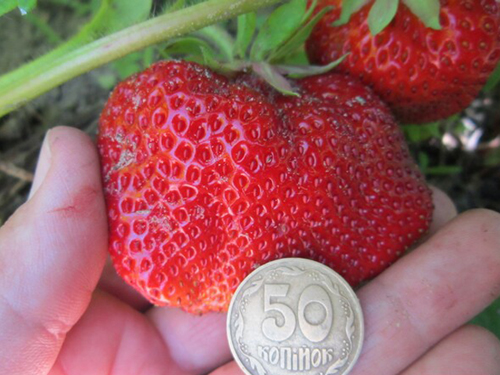
The plants are very vigorous, about 35-50 cm high, and can reach 60-70 cm in diameter. The leaves are large, dull, without shine, light green in color, sometimes darker. The surface of the sheet plate is slightly corrugated, wrinkled. The flower stalks are very strong, they hold the berries perfectly, they are not prone to lodging under their weight. Abundant flowering, quite a lot of fruits are tied. The plant is characterized by a fast growth rate, as well as an abundant formation of whiskers, very strong and thick. This feature of the variety can be a plus for those who grow strawberries for the purpose of propagation or sale of seedlings. If the plantation is planted specifically for the production of berries, the large number of mustaches can be a problem, and additional attention will be required to ration their number.
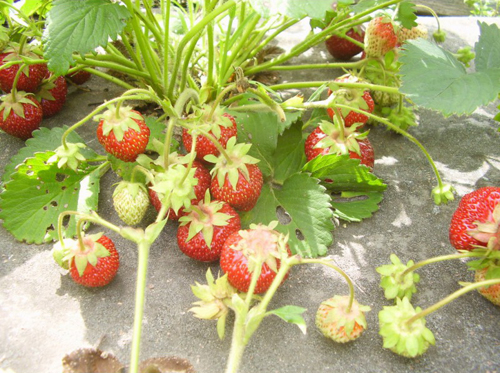
The berries of Gigantella Maxim are very large, saturated dark red with a slight glossy sheen, sometimes without it. They have a peculiar shape and often very inconsistent - from the correct rounded-conical to comb-like. At the beginning of fruiting, when the berries are of the largest size, it is the ridge-like, ribbed shape that predominates, while the fruits can be slightly flattened. This strawberry has one pleasant feature - the tip of the berry turns red only when fully ripe. Thus, ripe fruits are easy to find - they are completely scarlet, while unripe fruits have a white tip. The peel of the berries is quite dense, the achenes are pressed into the pulp to a medium depth, have a light yellow coloration. The fruits are easily separated from the stalk, are not damaged, after harvest they remain dry and very attractive.
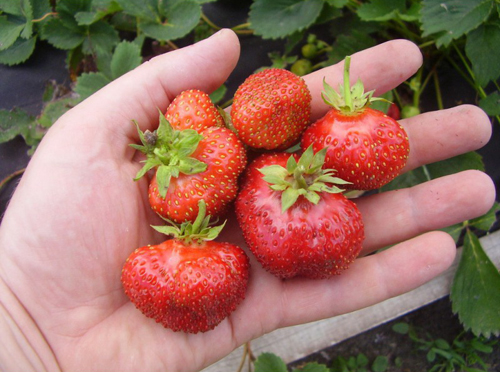
The strawberry flesh itself is very dense, at the same time quite loose and very juicy, with a wonderful rich aroma. The taste of the berries is simply delicious! They are very sweet, with bright notes of pineapple in the palate. However, there is one caveat - with improper agricultural practices, and in particular with insufficient soil moisture, voids are often formed in the fruits, especially at the beginning of fruiting, when they are very large. If suddenly such a problem arises, do not be surprised that the giant-looking berries will have an incomparably small mass. By the way, Gigantella Maxim is a very moisture-loving variety, so it is better to "overfill" a little than "underfill".In addition, our heroine has one outstanding advantage - even in high humidity conditions (for example, in excessively rainy seasons), the berries retain their sweetness. But, of course, the fruit will be sweeter when the plants are grown under optimal conditions and with adequate lighting.
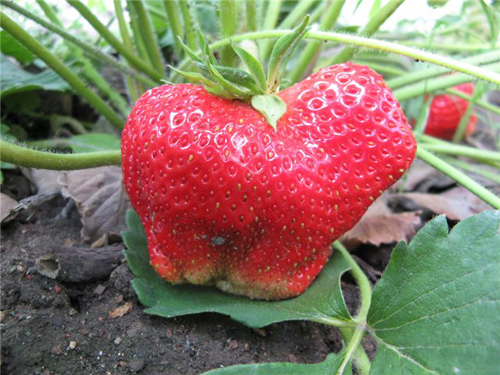
Due to the dense structure of the pulp, strawberries tolerate transportation very well. They are good to eat both fresh and canned. They are also great for freezing, when defrosting they will not lose their shape and will not turn into "porridge". In addition, the fruits have an excellent presentation and remain very neat after harvest, which makes Gigantella Maxim very suitable for growing for the sale of berries.
The variety has a rather extended fruiting period, while the berries gradually become smaller with each subsequent harvest. So, at the first harvest, the fruits are very large, they can reach 9 cm in diameter and weigh more than 100 grams. At the peak of fruiting, with the main harvest, the average weight of the berries will already be noted in the range of 40-60 grams, respectively, and their size will also decrease. The beginning of fruit ripening falls on the 20th of June when grown in open ground, under shelters and in greenhouse conditions, the date is shifted by a week, or even two earlier. Thus, our heroine begins her fruiting season a little later than other varieties, for example Festival, however, this has its own "charms" - while the productivity of other varieties has already begun to decline, Gigantella Maxim is only "getting a taste" and pleases with large numerous berries.
High-yielding strawberries, when grown in the open field, on average gives about 1 kg of berries per season, the best specimens of the plantation are capable of forming more than 2 kg of fruits. When cultivated under shelters, in greenhouses and greenhouses, it is possible to harvest an average of 2.5 kg per plant, often up to 3 kg. According to some reports, when grown on an industrial scale, it is possible to get 14.3 tons of berries per hectare of area.
As already mentioned, Gigantella Maxim has a prolonged fruiting period, moreover, it is rather heterogeneous, wavy. And many gardeners complain that during the second harvest and further, the berries become very small. It seems like they collected several giant fruits for the first time, and then only small specimens grow, inferior in size to all other varieties on the site. In fact, most of the blame for this phenomenon lies with the gardener. The fact is that our heroine is very whimsical and requires increased attention. Let's consider the main nuances of growing this strawberry in more detail, because they greatly affect the yield.
- Do not plant more than 4 plants per square meter. The distance between them should be 60-70 cm, and between the rows - 70-80 cm.If you do not follow these norms, you can say goodbye to a good harvest - the plants will be very cramped, the peduncles and mustache will get confused, the berries will not ripen due to thickening , and the root system of each bush will suffer from a lack of nutrition.
- Before planting, the soil must be properly prepared. It is very important to ensure that strawberries are adequately nourished from the earliest days of their growth.
- The variety is very thermophilic, it shows the best yield in sunny places, but it does not tolerate heat very well. Moreover, the berries of Gigantella Maxim are often baked in the sun, up to a complete loss of taste and marketability. Also, strawberries are very moisture-loving, so watering should be regular and abundant so that the yield remains at the proper level. The best solution would be to install a drip irrigation system, as well as mulching. And don't forget about loosening the soil.
- It is very important to provide plants with adequate nutrition during flowering and fruiting. By the way, this point is often neglected by gardeners, who complain about a strong decrease in yield after the first berry harvest.It is better to apply nitrogen fertilizers to the soil even before planting, but during flowering, ovary formation and ripening, special attention should be paid to mineral complexes with potassium, magnesium and phosphorus. Top dressing should be done at least 2-3 times per season, more often on soils poor in nutrient and mineral composition.
- Another important agronomic point is the removal of the strawberry whiskers. As already mentioned, Gigantella Maxim is distinguished by abundant plenitude, so it is very important to normalize their number if you want to get a good berry harvest. Whiskers take up quite a lot of nutrients, so if you don't take care of them, you can not hope for high yields.
- Rejuvenate the plantation in a timely manner. The variety is weakening rather quickly, therefore, planting material should be replaced already for 3-4 years of use. If this is not done, the berries will begin to noticeably shrink and acquire ugly shapes, besides, the plants will become more susceptible to diseases, and the fruits will be set in much smaller quantities.
It is worth talking about some other features of Gigantella Maxim. It has become quite widespread throughout Russia, but not in every region and not on all soils can show excellent results. Firstly, strawberries are very demanding on soils; they grow better on moderately moist loamy fertile soils with neutral acidity. Secondly, the plants are quite frost-hardy, but in regions with cold winters, they require mandatory shelter. And thirdly, the species does not tolerate heat very well, therefore, in the southern regions, it requires very painstaking care of itself.
Our heroine is resistant to strawberry mites and gray rot. According to some reports, in rainy seasons, as well as when growing in the shade, it can be affected by gray rot, moreover, to a large extent.
Summing up, we can say the following. Gigantella Maxim is a very promising variety, definitely worthy of attention. Who doesn't want to grow apple-sized berries on their site! However, due to their high yield and large size of fruits, plants require very careful care. By the way, many gardeners abandoned this variety precisely because of the complexities of agricultural technology. Summer residents also disagree about the taste of strawberries. Some are dissatisfied with the density of the berries, others with voids in the middle of the fruit, others generally say that the taste of the variety is very mediocre, does not represent anything special and does not even compare with other varieties. Well, among the huge number of reviews, it is difficult to find one hundred percent correct, so the only solution is to try to grow Gigantella Maxim on your site and personally appreciate all its advantages.

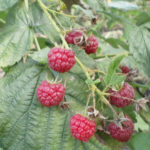
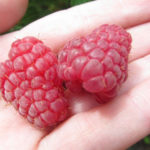

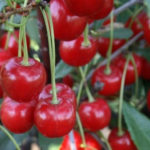
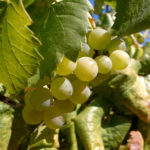



I would have planted only remontant varieties on all strawberry beds for a long time, but this replacement does not threaten Gigantella: although she bears fruit only once a season, her taste and yield will compensate for everything - you cannot but have such a variety on your site! It blooms at the end of April, the first berries appear at the end of May, and at the beginning of June large gathering of berries begins. The photo shows a 5-liter pot between 2-year-old bushes. From the ratio of the size of the pot to the strawberry rows in which it drowned, you can get an idea of the size of the bushes and leaves - they're huge! Even the berries on their background seem much smaller than they are.
In general, Gigantella berries, especially the first ones, justify the name of the variety. There are up to 6 peduncles on the bush, on which there are up to 15 ovaries of different sizes and stages of development. They ripen alternately, which determines the duration of fruiting up to 3 weeks. As a result, 5 liters is an average one-time harvest from 4 rows, each 4.5 meters long (row spacing - 70 cm, so that it is convenient to walk). From two such beds (on the second - 3-year-old bushes) I get 10 or more liters of strawberries every other day, or 5 - 7 liters from the garden every day for 2 - 3 weeks. This is despite the fact that I do not fertilize it with anything, except that sometimes I put hay in the aisles. Grows on loam. Once every 5 years, like all garden strawberries, I transplant to a new, always sunny place and rejuvenate (when transplanting, I throw away the old roots). If it is dry for a long time, I water it. If it rains, I loosen the aisles. Until the berry leaves, I regularly cut off the mustache, when it leaves, I mow the leaves so as not to do this anymore. I cut straight with an electric trimmer, but not "to zero", but so that the growth point remains. Before leaving for wintering, the leaves have time to grow, and the whiskers almost do not give any more, and the fungal diseases are less divorced. By the way, spots typical for fungi appear on the leaves in summer, but this does not have time to affect the berries, so I do not process anything, only thin out the overgrown rows before mowing. The following spring, the leaves grow green and, if sunny and spacious, they remain healthy.
Maybe there are varieties that are more tasty and fruitful, but I don't know such. If only they would bring out the remontant Gigantella ...
Gigantella I got, one might say, by accident - I changed the chrysanthemum for 3 strawberry bushes from some farmer. I planted them somehow and almost forgot. I came across overgrown bushes, which were literally strewn with huge fruits, in late spring! After I picked the berries (some, unfortunately, had to be thrown away because they were overripe) and tasted them, I was delighted: "But the farmer did not cheat!" The strawberries really turned out to be exactly as he said - juicy, fragrant and somehow unusually huge. In addition, I noticed that the bushes, despite the carelessness in planting, took root well and even felt great in the weeds. I immediately thought - what would they say if they were given a little care?
Now, in addition to remontant strawberries (fruiting from spring to autumn), I also have "Gigantella", which children adore and sweep it right from the garden, so I cannot harvest the entire crop
This strawberry, as already mentioned, turned out to be quite unpretentious, tolerates drought well, winters well and is not prone to disease. The only drawback (although if you want it can be turned into a plus by selling seedlings) - she throws out her mustache very generously. But I learned to cope with this by making wide (about a meter) aisles and directing the shoots there. As a result, new plants have room for growth and do not clog up the space around the mother plant. And when it comes time for planting (for myself, I update the bushes every three years), then young strong plants are easily dug out. In addition, it is very convenient to apply fertilizers in wide aisles. I feed the strawberries with chicken droppings (1/10 ratio) twice a season, and for the winter I sow overripe dung. The most difficult part of growing strawberries is fighting the beetle larva. Here, unfortunately, I have not yet found a single method.
Gigantella lives up to its name. The berries are very large. When the jam was cooked, they were cut into 4 pieces with a knife. The taste is excellent even when unripe. The bush is powerful, well developed.Watering was carried out as it dries, but it was loosened strictly between the rows, under the bushes it is impossible - you can damage the root system. The first winter our strawberry endured steadily, but the next one - no, a lot was frozen. We decided to plant another variety next to the remaining bushes, which we regretted. The plants were dusty, the berries were crushed, and the taste changed. It is better to plant this variety separately from others and propagate with antennae.